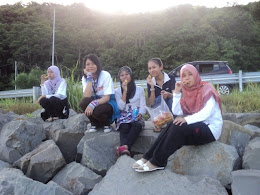The boundaries of the triangle cover the Straits of Florida, the Bahamas and the entire Caribbean island area and the Atlantic east to the Azores. The more familiar triangular boundary in most written works has as its points somewhere on the Atlantic coast of Miami; San Juan, Puerto Rico; and the mid-Atlantic island of Bermuda, with most of the accidents concentrated along the southern boundary around the Bahamas and the Florida Straits.
The area is one of the most heavily traveled shipping lanes in the world, with ships crossing through it daily for ports in the Americas, Europe, and the Caribbean Islands. Cruise ships are also plentiful, and pleasure craft regularly go back and forth between Florida and the islands. It is also a heavily flown route for commercial and private aircraft heading towards Florida, the Caribbean, and South America from points north.
The earliest allegation of unusual disappearances in the Bermuda area appeared in a September 16, 1950 Associated Press article by Edward Van Winkle Jones. Two years later, Fate magazine published "Sea Mystery At Our Back Door", a short article by George X. Sand covering the loss of several planes and ships, including the loss of Flight 19, a group of five U.S. Navy TBM Avenger bombers on a training mission. Sand's article was the first to lay out the now-familiar triangular area where the losses took place. Flight 19 alone would be covered in the April 1962 issue of American Legion Magazine.It was claimed that the flight leader had been heard saying "We are entering white water, nothing seems right. We don't know where we are, the water is green, no white." It was also claimed that officials at the Navy board of inquiry stated that the planes "flew off to Mars." Sand's article was the first to suggest a supernatural element to the Flight 19 incident. In the February 1964 issue of Argosy, Vincent Gaddis's article "The Deadly Bermuda Triangle" argued that Flight 19 and other disappearances were part of a pattern of strange events in the region.The next year, Gaddis expanded this article into a book, Invisible Horizons.
Others would follow with their own works, elaborating on Gaddis's ideas: John Wallace Spencer (Limbo of the Lost, 1969, repr. 1973); Charles Berlitz (The Bermuda Triangle, 1974); Richard Winer (The Devil's Triangle, 1974), and many others, all keeping to some of the same supernatural elements outlined by Eckert.
Source and for further information :http://en.wikipedia.org/wiki/Bermuda_Triangle
Fill up your days with lots of emotions!


































.jpg)






3 comments:
like:)
Tmpt ne bknnya devil's pn kn?? D'sbbkn sejenis gas yg mnyebabkn benda2 2 blaku jak pn...
http://adventure.howstuffworks.com/bermuda-triangle.htm
Cek d web ne, pjelasan psal kjadian parnormal ne t'jwb jg akhirnya..
Post a Comment